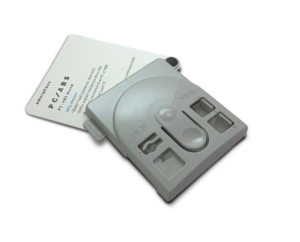
PC/ABS (sometimes “PC-blend”) is a blend of polycarbonate and ABS. It is very common in housings of electronic appliances. The blend is intended to combine the best properties of each grade: extended operating temperature range, impact resistance, processability, and good surface quality (although it is a common joke that PC/ABS combines the worst properties of the two materials).
As a combination of two amorphous materials, PC/ABS is naturally amorphous as well. However, the ABS content makes it opaque.
Why choose?
- Better resistance against elevated temperature than ABS and better cold resistance than PC.
- Strangely enough, this combination of two materials with poor UV resistance can endure UV light slightly better.
Why not choose:
- Poor chemical resistance
- Prone to stress corrosion cracking
Typical applications:
- TV remote controller’s case
- Cell phone case
- Laptops
By examining the Plasticprop sample made of PC/ABS, you can draw for example the following conclusions:
- The sample is straight and has neat surfaces, and the corner effect is negligible. The overall quality impression is similar to the ABS sample.
- The impact resistance of PC/ABS and ABS samples at low temperatures can be compared by freezing them. Naturally, it is difficult to ensure absolutely neutral testing conditions. The impact resistance of PC/ABS at low temperatures should be superior to that of PC.
- When PC/ABS and ABS samples are heated, softening of the PC/ABS sample will take longer. Improved heat resistance is one of the reasons for using the blend.